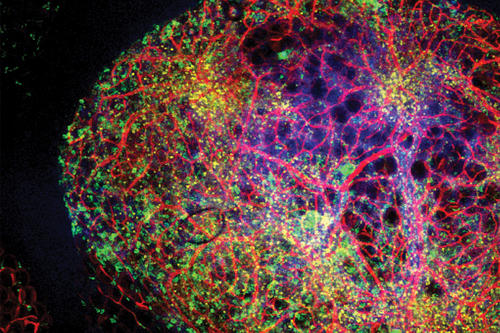
In many people, aging makes it harder to burn fat, which accumulates in the abdomen as a “beer belly.” Now, a team led by Christina Camell, an assistant professor in the Department of Biochemistry, Molecular Biology and Biophysics of the U of M Medical School and College of Biological Sciences, has shown that this fat buildup also occurs in mice and is due to the activity of two major culprits.
The work points to new directions for treatment to improve metabolic health.
Aging vs. the body’s defenses
Both culprits belong to the immune system—normally the body’s defense force.
One culprit is immune cells called AABs (adipose-associated B cells). In the abdomen, these cells band together with fat cells to form dense clusters. During aging these clusters expand, and the output of signals by AABs expands with them. These factors hamper the neighboring fat cells’ ability to break down fat so it can be burned for energy. And so it builds up.
The other culprit is a protein structure found in other immune cells. The activation of this structure—called an inflammasome—causes the clusters of AAB cells to expand.
Unexpectedly, “Age-related expansion of the clusters was markedly pronounced in female mice and less profound in male animals,” notes Camell.
Widespread consequences
Besides inhibiting fat metabolism, AAB cells cause inflammation and a weakened sensitivity to insulin—all common features of aging. In Camell’s experiments, shutting down either the inflammasome or the AAB cells restored normal metabolic activity.
“I think it’s important to identify these pathways or factors so that we can appropriately, maybe, intervene to block their contributions to metabolic dysfunction,” she says.
Camell performed the study as a postdoctoral researcher at Yale University with Vishwa Deep Dixit, MD. At the U of M, she is widening her research to study how immune cells may contribute to COVID-19 morbidity in the elderly.
- Categories:
- Health




